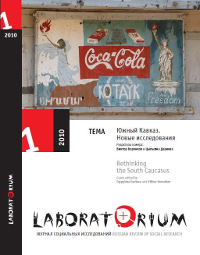Between Adler and Gagra: The Border Matrix
Main Article Content
Abstract
Part of a series of essays by Russian sociologists who took part in a two-week “fieldwork school” on both sides of the Russian-Abkhazian border in 2005, this paper reflects on the multiplicity of borders that need to be crossed while working in the Russian-Abkhazian border zone. The state border between Russia and its (then) unrecognized neighbor is one of the few post-Soviet borders subject to manipulation by the Russian authorities. The border has also become a zone of piecemeal cross-border trade. However, the most significant border is between Abkhazia’s self-image as a peaceful tourist destination and the ubiquitous and increasingly institutionalized memory of the war. Visitors cross this border permanently, in both their physical movement around any Abkhazian town and their conversations with local hosts. Finally, unlike more solidified post-Soviet borders, Russians experience the Russian- Abkhazian borderland as an exotic territory where boundaries and rules are suspended. In Russian, summary in English.
Keywords
Abstract 165 | PDF Full Paper (Русский) Downloads 78 PDF Extended Summary Downloads 69 HTML Full Paper (Русский) Downloads 55 HTML Extended Summary Downloads 6

